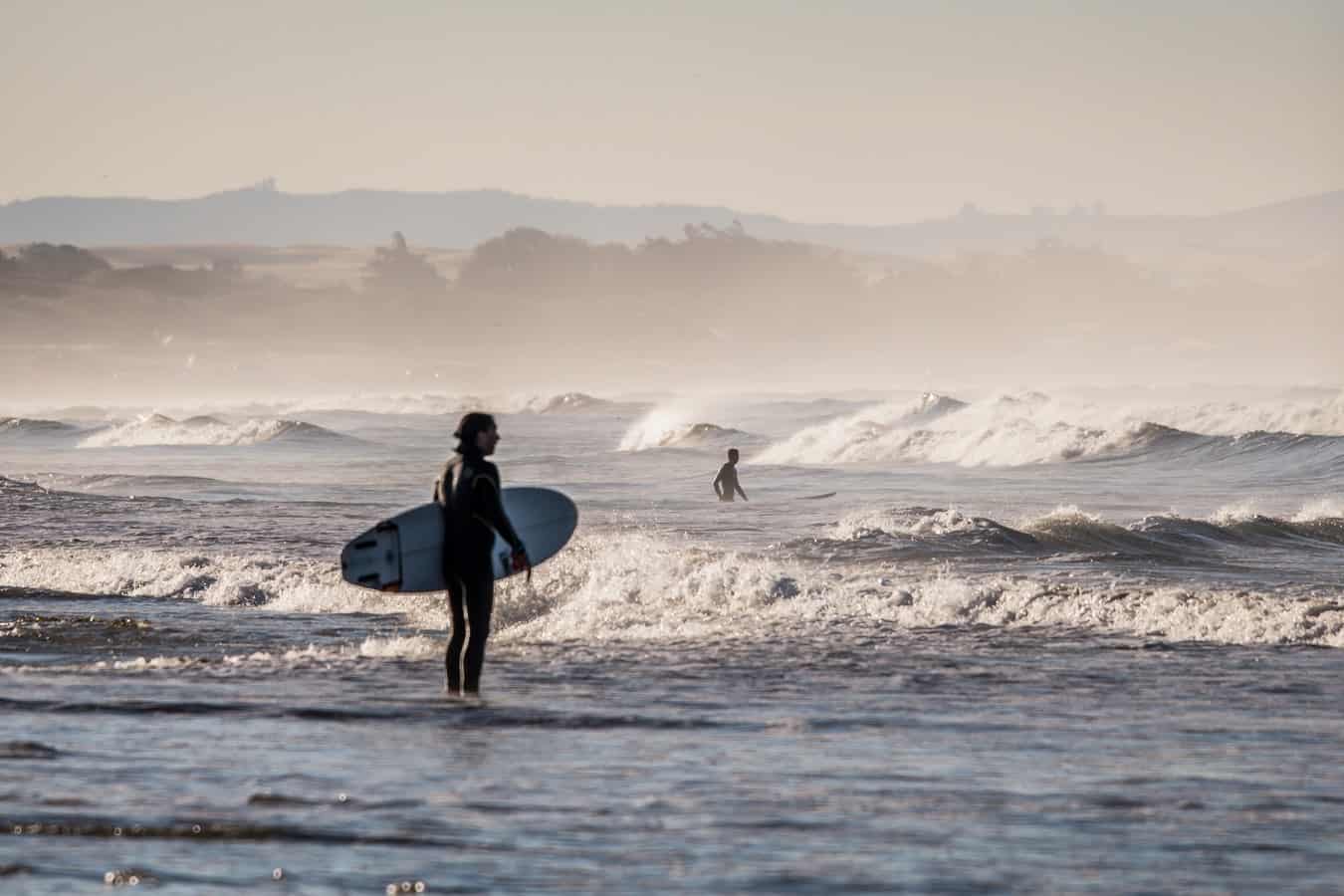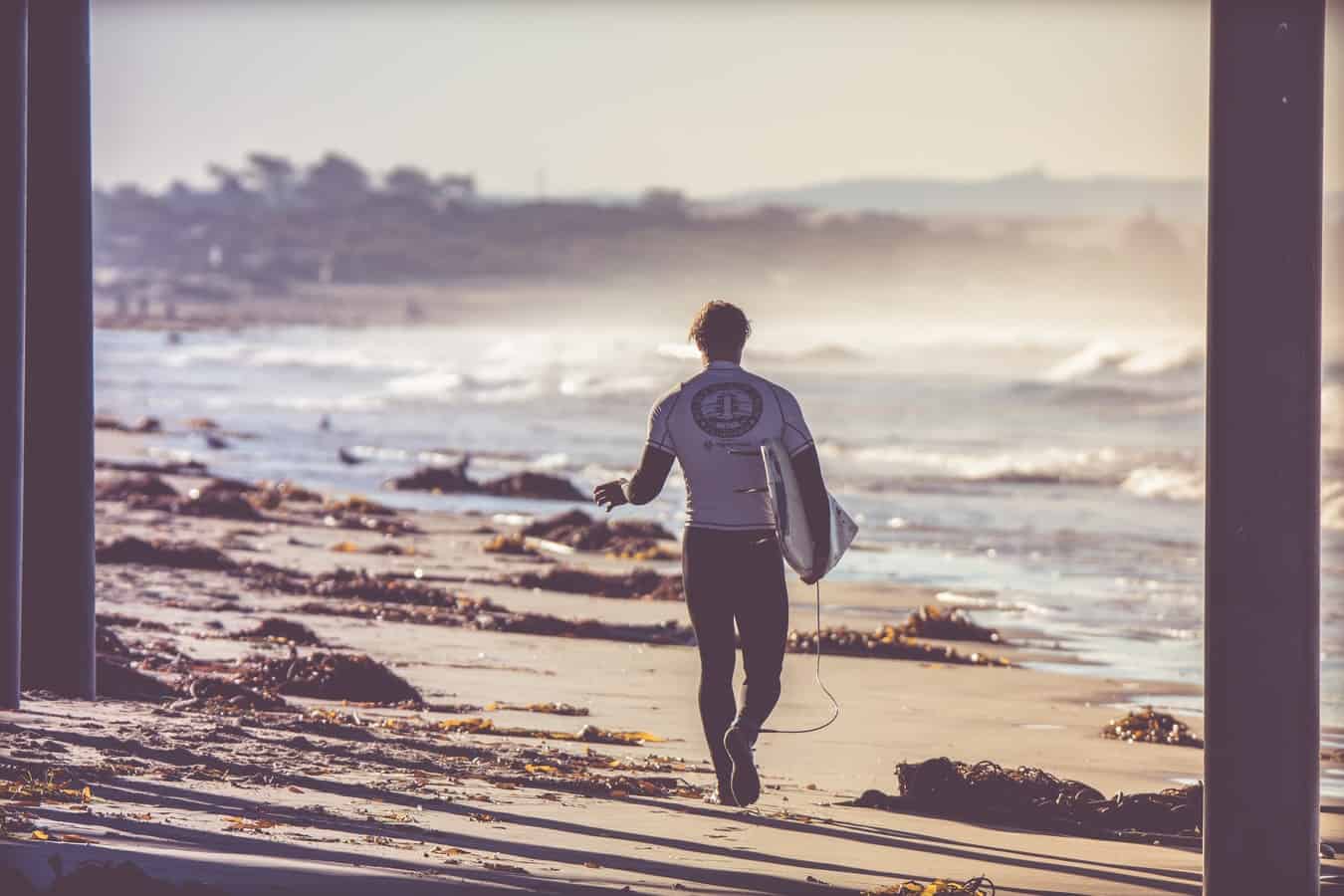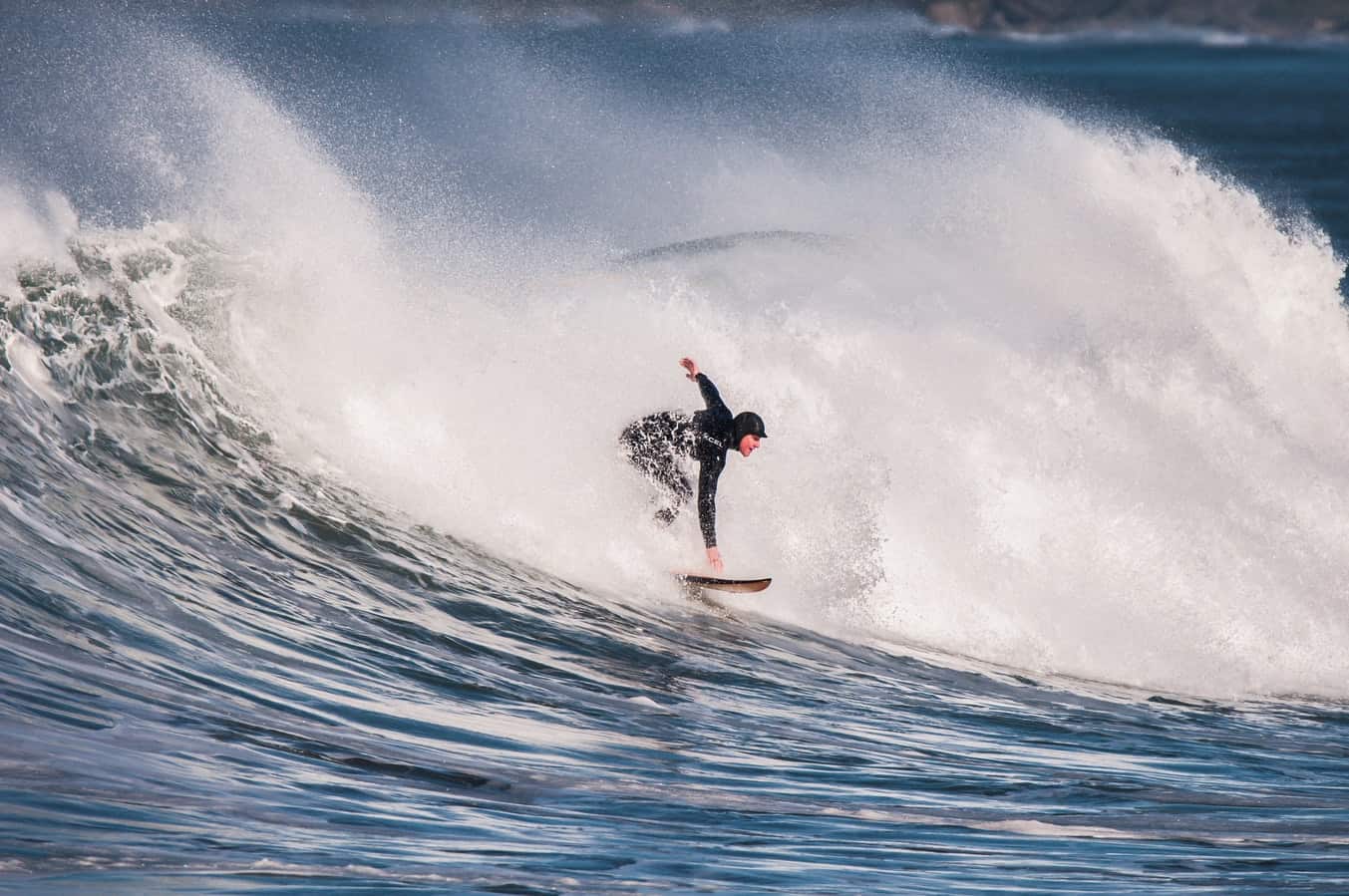As recently as 30 years ago there was only one surfboard model. It was a longboard and it was 8 to 12 feet in length. It was made of polyurethane and was heavy. But it rode the waves with mellow ease and surfers everywhere saw many more pros in the longboard than the cons. Today surfing has met the tech age, and now there are 7 main classes of surfboards. Each class is based on different waves surfers prefer to ride and the surfing ability of the surfer. Surfers are thought to be at one of three levels of expertise: beginner, intermediate, and advanced.
So, what is a good surfboard for intermediate surfers? As an intermediate surfer I’d recommend a Mini Mal board. However, different boards can be used to get the best session by assessing the surf reports for ocean conditions on the days you surf.
The first question to ask is, How do I know when I’ve reached an intermediate level as a surfer? If you can perform all of the following, then consider yourself as having graduated from the beginner level.
- You can surf waves with bigger swells and that move faster than whitewater. Now you can catch unbroken waves while waiting your turn in a lineup.
- Your riding to wipe out ratio favors riding. You ride more than you wipe out.
- You’re able to maneuver our board toward the wave’s power pocket. This is the wave’s curl. You’re able to ride the curl to the end and remain standing.
- You can do a proper bottom turn. A bottom turn happens after you pop up and then you’re facing the wave. The wave is breaking. You face the bottom of the wave. You then turn the surfboard towards the wave and ride it to the top at a suitable angle.
- At the top, you turn the board back with the nose facing the shoreline.
- You know where the correct takeoff spot is for waves you like to ride.
- Your timing is at a point when you know the exact time it takes to paddle out and catch the wave.
If you can perform a majority of actions from the above list, then you’re an intermediate level surfer.
How Can I Tell What Types Of Waves Are In The Ocean Near Me?
There are a few good ways to know the predominant wave type that breaks in the ocean near you. Ask yourself, too, what type of wave is your favorite. Ask experienced surfers in your area the predominant weave forms that break at your beach.
Another way to tell is to take note of the kinds of surfboards people are using. If most of the boards you see are longboards, that means the waves come in slowly and at a relaxed speed. They can be both small waves and big waves.
If you spot a lot of surfers using shortboards, then the waves are more powerful and move to the shore quickly. These waves can get very big and very strong. Shortboards are used by experienced surfers and help them maneuver through the waves.
Waves fall into one of these categories.

Beach Break Waves
When you see waves breaking near the shore, then you know that these are beach break waves. The bottom of the sea is soft and sandy. These waves can be either hollow, gentle, long, short or powerful, depending on the time of year.
Reef Break Waves
The opposite of beach break, reef break waves are found in waters that have a rocky bottom. Some of the most forceful and unpredictable waves break over reefs, but intermediates can ride most of them.
Be careful with these, though. Falling off the board into coral can be painful, and open cuts and sores can get infected. Reef breaks are not for beginners. The waves are generally larger than beach breaks, and you may need to paddle far to reach them.
Point Break Waves
These waves are very long. The wave will wrap around a point, then runs along the coastline of a bay. You will experience your longest riding time on a point break wave. Surfers in small numbers can ride point break waves all at the same time without causing injury to each other. Surfers are each a good distance from each other.
Make sure to look out for rocks surrounding the ocean where point breaks occur.
What Models Of Surfboards Are There To Choose From?
There are 4 common types of surfboards you can buy, aside from those that are custom made.
Shortboard
As the name implies, shortboards are short, only 6 feet 6 inches in length. Shortboards, compared to larger boards, are easy to maneuver, and lighter than longboards. If you’re an intermediate level surfer then you know how to duck dive and do a turtle roll. The board is shorter and lighter so it’s much easier to perform these moves.
On the other hand, it’s harder to generate speed with the shortboard, which can make it harder to catch waves. Beginners don’t ever use shortboards. At the intermediate level, shortboards can serve as an introduction to the longboard or other board designs.
Gun Board
Gun Boards are designed for more advanced surfers, and range in size from 7 feet up to 12 feet. They were designed for riding some of the world’s biggest waves, such as in Hawaii, Tahiti, and Fiji.
Gun boards are designed with a narrow body. Its nose is pointed and its tail ends at a point as well.
Gun boards help you paddle very, very fast. But it’s specifically designed for waves over 25 feet. These boards are only suitable for big waves. You won’t see many surfers using them at your local beach. Intermediate level surfers are not advised to purchase gun boards, nor should they ride 60-foot waves until they’ve surfed for a few years.

Mini Mal
This board is of interest to intermediate level surfers. It is the board you’d normally graduate to after using a foam surfboard as a beginner.
The mini mal is a stepping stone from a foamie to a longboard. They are anywhere from 7 feet to 8 and a half feet in length. It has a high volume, meaning it’s buoyant. It is easier to remain standing on a mini mal.
It’s easier to catch waves on a mini mal than on a shortboard. It’s also a great board for when the waves break weaker. This means that even on normally bad surfing days, you’ll still have a decent experience with a mini mal.
Longboard
This 9 feet to 12 feet surfboard was the standard up until about 15 years ago. There was a time when 95% of surfers used longboards. They’re still the biggest selling surfboard today, but the other models are encroaching on their once-dominant position.
Longboards are buoyant, high-volume surfboards, incredibly stable, and easy to paddle on.
Longboards don’t depreciate as much as shortboards, foam boards, or gun boards, Like mini mals, longboards kept in good condition can be resold at a high price.
Longboards are long, so it’s easy to move across them and to perform hand tens and drop-knee turns. You can even have tandem rides on a longboard so you and a partner can ride waves at the same time.
Be aware that one big downside to the longboard is its weight. Longboards are the heaviest surfboards made. If you drive a compact car, the board may be too long to carry with you. Unlike a foam board, where you can’t get hurt if you fall off it, a longboard can act as a weapon against you if you fall off. Its heaviness and sheer size are formidable, and you can get seriously injured if it hits you when you wipe out.
Related Questions
Should I Add Extra Fins To My Surfboard?
Fins have a big impact on how your surfboard ride will feel and will affect how well you can maneuver your surfboard.
Fins allow you extra help in maneuvering your surfboard through the water. You can surf without fins, but it will be harder to turn your surfboard in the direction you want without them.
The most popular fin configuration is the 3 fin setup. These come already in place on most surfboards you buy. Two outer fins are angled to the center of the board and the third at the tail helps you steer and maneuver.
Which Surfboard Model Gives the Smoothest Ride?
By far, the longboard gives the smoothest and most relaxing ride over the water. Because of its huge 12 foot size and heaviness, it offers a mellow surfing experience. The longboard rides easily through currents, swells, and wave ripples without any disruptions.
Remember that the longboard is heavy in the water at the same time, but if you’re in good physical condition, you’ll be able to paddle as fast on the longboard as a smaller sized board. The key is personal fitness. The better condition you’re in, the more choices of surfboard you will have.
Should I Own More Than One Surfboard?
If you can afford more than one surfboard, then it’s highly recommended that you have several different surfboard models in your quiver. This is because sea conditions are not consistent. In the summer, the water can be smooth with a lot of beach breaks, but in the fall the ocean can be more turbulent, and there can be faster, bigger waves at this time of year. If you have a variety of boards, you’ll be ready to surf no matter what the ocean offers.

